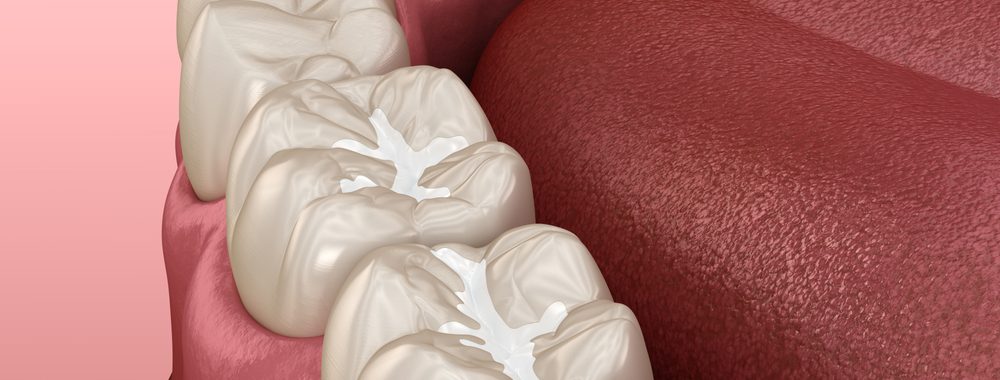There are Decay Issues with Back Molar Chewing Surfaces
Back molars teeth work well for chewing and grinding food. But this surface that is ideal for chewing is also prone to decay. These teeth often have grooves and pits where food particles and bacteria can easily get trapped. Even with regular brushing and flossing, it can be difficult to clean these areas thoroughly. Often the pits in the teeth that trap the food debris are finer than the bristles of the toothbrush. This makes the molars vulnerable to cavities, which can lead to more severe dental issues if left untreated.
How Dental Sealants Can Help
Dental sealants are an effective preventive measure that protects the chewing surfaces of the back molars from decay. The sealant is a thin, plastic coating that is applied only to the chewing surface of the teeth. It acts as a barrier, preventing food and bacteria from getting into the grooves and pits of the molars. Application of sealants is a fairly quick and painless procedure. The tooth is thoroughly cleaned, the chewing surface is slightly roughened, and then the sealant is applied, which bonds well to the roughened surface. The sealant quickly hardens, providing effective protection against decay.
Duration of Sealants
Sealants usually last for several years before they need to be reapplied. Typically, they can protect the teeth for up to 5 to 10 years. Primary age children will only need their baby teeth sealed once. And then they should have their permanent teeth resealed about every 5 years. The longevity of sealants will vary depending on an individual’s oral hygiene habits. Excessive wear and tear from hard chewing or teeth grinding will cause sealants to wear prematurely. Regular dental check-ups are important to ensure the sealants remain intact and effective. The dentist can reapply the sealant when necessary to maintain optimal protection.
Why Sealants Can’t Be Applied to All Teeth
Sealants are applied almost exclusively on the chewing surfaces of the back molars because these teeth have grooves and pits where decay is most likely to start. The roughness of the chewing surface allows the sealant to bind well to the tooth. Front teeth and the smoother surfaces of other teeth do not typically have these deep grooves, so they are less prone to this type of decay, and will not bond well with a sealant. Moreover, sealants are often recommended for children and teenagers whose back molars are still developing and are more susceptible to cavities. Adults can also benefit from sealants, but they are less commonly applied to teeth that already have fillings or decay.
Conclusion
Sealants are an effective preventive tool for reducing decay on the chewing surfaces of back molar teeth. They provide a protective barrier that helps keep food and bacteria out of the deep grooves and pits, significantly reducing the risk of cavities. While they are usually long-lasting, we still need regular dental check-ups to ensure they remain effective, as they may sometimes be worn away by teeth grinding or other bad habits. Talk to our Carlingford dentist about the specific role of sealants and their appropriate application. Patients can make informed decisions to maintain their oral health.
Information Disclaimer
The content of this article is meant for informational purposes only and should not be considered a source of professional advice, recommendations, or endorsements. It is not a substitute for seeking expert guidance or making well-informed decisions based on individual circumstances. Although we strive for accuracy and reliability, we cannot guarantee the information's completeness or suitability for all situations. Readers are urged to verify facts, consult experts, and consider their own context before taking actions or decisions based on this content. No warranties, explicit or implied, are provided regarding the accuracy, timeliness, or completeness of the presented information. Relying on this information is at the reader's own discretion and risk. We encourage readers to consult relevant professionals or experts for advice tailored to their specific needs. Neither the author, publisher, nor any affiliated parties will be held responsible for errors, omissions, or damages resulting from the use or reliance on the information in this article.

